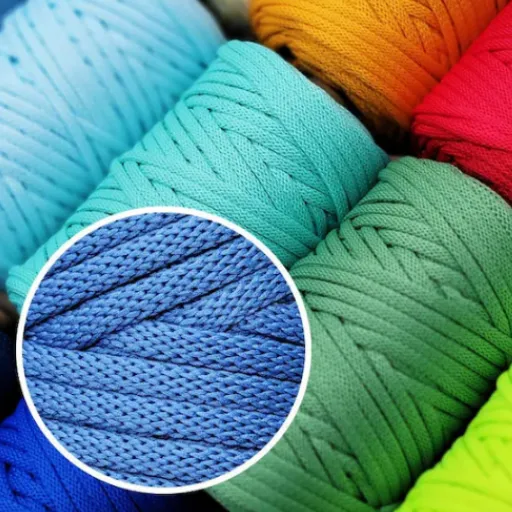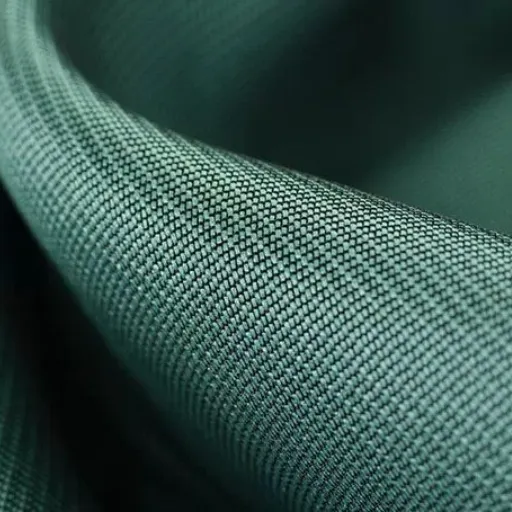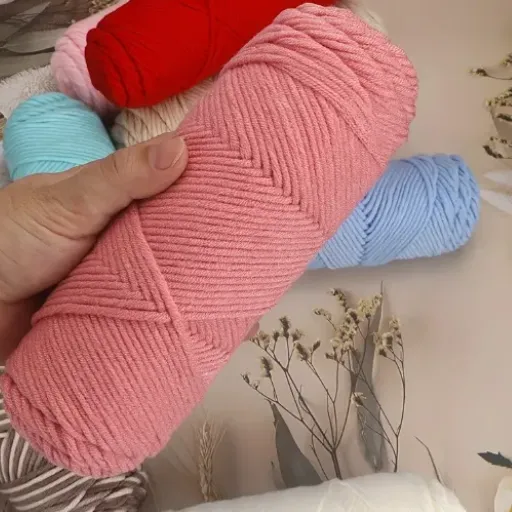Polyester fabric has been a great disruptor in the textile industry mainly due to its features like being strong, adaptable and cheap. One of the most notable applications among its many uses is the cotton polyester blend and other poly blends, which can merge the best qualities of each material together. No matter whether you are selecting fabrics for clothing, upholstery, or creative industrial usages, the knowledge of these blends is very important to ensure the selection of the right mixes that take into account the aspects of comfort, performance and style. The article delves into the universe of polyester blends, revealing their advantages, composition and even the reasons why they have become a basic element in both fashion and functionality. The reader is invited to unlock the mysteries of such versatile fabrics and to realize the extent of their daily lives!
Properties of Polyester and Cotton Fabrics
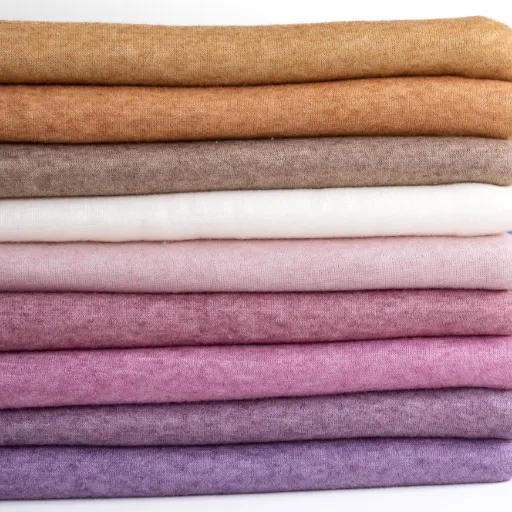
1Polyester Physical Characteristics
Polyester, a synthetic fabric, is known for its durability, resilience, and versatility. It is highly resistant to stretching, shrinking, and wrinkles, which makes it suitable for many applications, especially in clothing and home textiles. Polyester’s fibers are light, but at the same time they have considerable strength that guarantees their long-lasting performance even with the most frequent use.
The resistance of polyester to moisture is another property that sets it apart. The fabric has a low water absorption rate, which in turn, makes it quick drying and stain-resistant. This aspect is the main reason why polyester is the preferred material for sports and outdoor clothing, as it helps in moisture-wicking and keeps the person wearing it comfortable regardless of the weather. On top of that, the fabric’s resistance to UV rays adds to its outdoor performance and keeps it safe from sun damage.
Moreover, polyester can be blended with a spectrum of dyes, thus the finished product will be bright and colorfast. Even after repeated washing and exposure to light, the fabric will still retain its color for a long time. These characteristics, coupled with polyester’s affordability and the option to blend it with cotton, have made polyester a favorite in the areas of both practical and trendiest textiles.
2Physical Characteristics of Cotton
Cotton is a soft natural fiber that cannot be replaced by any other natural or synthetic fiber. Cotton has a smooth surface which makes it easy to touch and very friendly to the skin, thus being perfect for garments and linens. The softness of cotton is mainly due to its composition, which is primarily cellulose. Being a breathable fabric, it allows free circulation of air around the body, thus cotton keeps the person cool and comfortable even during hot weather.
High absorbency is another signature feature of cotton. Moisture can be efficiently absorbed by cotton fibers, which can soak up water equivalent to 25 times their weight at maximum. Thus, cotton becomes the best fabric for towels, knickers, and other things where moisture control is very important. Moreover, the strong fibers of cotton are also very long-lasting and can be washed repeatedly without the fibers getting significantly damaged; therefore, their versatility and longevity are further enhanced.
In the end, cotton is characterized by moderate elasticity, which enables it to give a perfect fit yet not be as stretchable as synthetic fibers. The lack of elasticity can sometimes result in creasing, but this is usually solved by mixing cotton with other fibers. Cotton is also a material that can easily decompose indicating its eco-friendliness as a choice over many synthetic substitutes, which are not easily broken down by nature. All these properties of cotton make it a highly appreciated and dependable material in different sectors.
3Comparison of Fabric Properties
Durability, comfort, and environmental impact are the three main aspects to be considered when comparing fabric properties. Cotton, being a natural fiber, is very soft and breathable, giving comfort that no other fabric can offer for daily wear. However, on the other hand, it is less durable compared to synthetic fabrics such as polyester, which can withstand and resist signs of aging through multiple uses. The durability of synthetic fabrics makes them the right choice for items like activewear or industrial materials, where their lifespan is of great importance.
Elasticity is another important factor. Continuous synthetic fibers like spandex and polyester are highly elastic and can hold their shapes well through the years making them perfect for stretchable clothing like sportswear. Cotton, however, does possess some elasticity, which can cause wrinkling or creasing. In order to minimize this, cotton is frequently blended with man-made fibers so that its quality is augmented without losing its comfort.
The environmental impact of fabric manufacture and disposal is, however, an important consideration. Cotton is wholly biodegradable and breaks down naturally, thus, it is eco-friendly as compared to synthetic fibers, which have a relatively long time to completely decompose. Cotton, however, is still an ecologically challenging crop because its cultivation needs water and pesticides in high amounts. The environment has its costs for synthetic materials derived from fossil fuels, especially in their manufacturing and post-consumption waste. The factoring of these pros and cons enables the consumers to make choices that are both needs and values-based.
Cotton Polyester Blend: Benefits and Uses
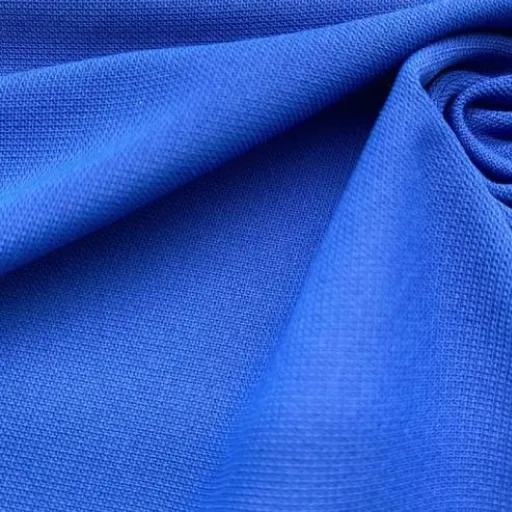
Advantages of Cotton Polyester Blends
Cotton polyester blends amalgamate the best qualities of both materials and are hence majorly preferred due to their significant advantages with respect to durability, comfort, and versatility. Polyester’s durability makes cotton softer and more breathable which is the reason why this blend is widely accepted from clothes to house textiles.
Strength and Longevity
The resistance of polyester fibers to wear and tear prevents the problems that come with pure cotton fabrics and those are shrinkage, stretching, and wrinkles. Fabrics made with the said blend are thus the last ones to be thrown out because they undergo less wear and tear during washing and keep their shape. As per industrial analytics, fabric degradation in polyester-cotton blends may be decreased by as much as 30% when compared to pure cotton.
Moisture Management
In the case of blended fabrics, whenever the cotton’s absorbency is taken into consideration, polyester’s moisture-wicking properties are simultaneously introduced. It is the dominant nature of the trait that ensures that the skin remains reasonably dry and comfortable which is the reason these blends are preferred for active and sportswear.
Efficiency and Cost-Effectiveness
The use of blends can lead to a decrease in production expenses as the polyester price is usually below that of cotton. It has been observed that the cotton polyester blends cut down the manufacturing costs by approximately 20%-40% depending on the mixing ratio.
Eco-Friendliness in Some Applications
Both cotton and polyester indeed have environmental impacts, but the use of blended textiles can lead to better resource management. For instance, by cultivating less cotton and using more polyester, which is produced with fewer resources, the overall consumption of these resources can be lower.
Versatility and Appearance
The blends of cotton and polyester hold great potential and can easily be adapted to meet even the most demanding manufacturing requirements. The end product is fabrics with smoother textures and more brilliant colors, since the blending of cotton and polyester makes the latter hold dye better than cotton. This gives the blend the feature of being suitable for bright, lasting, eye-catching designs.
Cotton polyester blends are, thus, a convenient and cost-effective material selection that meets the needs of various industries by striking a perfect balance among comfort, performance, and sustainability.
Common Applications of Cotton Polyester Blend Fabric
The cotton polyester blend fabric is an extremely versatile and durable material, thus it is extensively used in several industries. The following are the main applications of the fabric:
Apparel Industry
The most common use of cotton-polyester blends is in the apparel industry especially in casual and sportswear. The fabric’s ability to absorb moisture and at the same time not get creased or shrink has made it favored for making t-shirts, hoodies, activewear, and uniforms.
Home Furnishings
The blend is largely used in making home textiles like bedsheets, pillow covers, curtains, and upholstery. The ease with which the fabric can be cared for along with its capacity to bear brilliant patterns has made it a good choice for home use. A survey has revealed that around 30% of home textile items worldwide use cotton polyester blends, which is a strong indicator of their popularity in this area.
Medical and Healthcare Textiles
Blended fabrics are now often seen in hospitals that use them for linen, lab coats, and scrubs as their main characteristics are high durability and the ability to withstand frequent washing at high temperatures. The resistance to tearing and wearing is a major criterion for the healthcare industry as it can keep hygiene standards up all the time.
Industrial Use
Cotton polyester blends are popular in industrial use, as they are work clothes and protective garments. At the same time, their durability, along with the lower price, is the reason why they are used. These fabrics not only give the workers the comfort they desire but also stand the test of durability as they are used in tough working conditions.
Promotional Merchandise
T-shirts, caps, and tote bags are among the top items to which the fabric will undoubtedly serve as one of the best options for branding and promotional items. Non-fading of logos and designs is made possible because of the fabric’s capability to retain dye, thereby making it even more suitable for marketing purposes because the vibrancy stays even after many washes.
These applications showcase the remarkable versatility of the cotton polyester blends and thus they are the only ones to be used in all different sectors. The future trends in textile technology are able to improve their performance further and, hence, the field of their applications gets wider.
Selecting Between Cotton and Polyester Fabrics
Before choosing between cotton and polyester fabrics, it is important to familiarize yourself with their specific traits. Cotton is a natural fiber recognized for its softness, roundness, and support. It absorbs moisture very well, which makes it great for hotter areas or sweating activities. Cotton is also non-allergenic, thus it is recommended for sensitive skin. On the downside, cotton can easily get wrinkled, shrunken, and faded over time and the process can be accelerated after repeated laundering.
Polyester is the opposite of cotton—an artificial fiber that is recognized for its strength and smoothness as well as very little to no wrinkling, shrinking, and fading at all. It dries quickly and takes up very little space, thus it is a very practical choice for sportswear or clothes that will be used frequently. But polyester is less breathable than cotton so it might not feel that pleasant in hot or humid weather, Plus, it does not take in water but moves it away which might be an advantage during the very active sports periods.
In the end, the decision between cotton and polyester will rely on the use case and personal preferences. In case the priorities are comfort, breathable, and natural fibers, cotton is usually the better choice. On the contrary, if one is looking for long-lasting, moisture-wicking, and low-maintenance fabrics then polyester is more suitable. There is always a good side for both fabrics, and sometimes a blend of two can yield those good sides, providing that flexibility to different usages.
Durability and Care Instructions
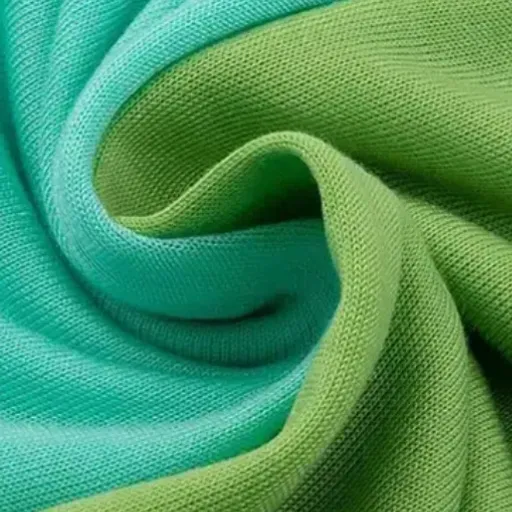
Durability of Polyester vs. Cotton
Polyester being a synthetic product, is usually more durable than cotton. Its durable nature prevents the material from shrinking, fading, or losing its shape in a short period. This endurance makes polyester to be the most commonly used fabric in making types of clothes that are often used and washed regularly like sportswear and camping gear.
Cotton is a fabric with a good touch and nice feeling but less strong than polyester and thus the loss is bigger since it is more exposed to damage by washing, nature and direct sunlight. The cotton fibers may become thinner or break, particularly if they are kept wet for a long time. However, if cotton is properly maintained it can be a good garment for everyday use, providing good longevity.
For both materials, durability depends on proper care. A polyester garment is usually washed in cold or warm water and cannot be dried in high heat. Cotton fabrics can be washed on a gentle cycle and air dried to avoid shrinking and fiber damage. Proper care methods not only assure a longer lifespan of both materials but also the quality of the fabric.
Cotton and Polyester Fabrics Care Instructions
If you want cotton and polyester fabrics to last for a long time and look good, it is very important to take proper care of each type of material. Below are the step-by-step instructions, taken together with the latest care practices:
Cotton Care Instructions
Washing
- Choose a gentle cycle with cold or warm water; hot water can shrink cotton fibers.
- Use mild detergents only as they won’t weaken the material.
Drying
- Air-dried cotton clothes will not shrink plus their texture will be kept.
- However, if using a dryer, low heat or tumble-dry setting should be chosen so that wear and tear are kept to a minimum.
Ironing
- Cotton will wrinkle more than other fabrics; hence iron at medium to high heat with steam for best results.
Stain Removal
- Act fast and use a fabric-safe stain remover to get rid of any stain before it sets into the fibers.
Polyester Care Instructions
Washing
- Polyester should be washed in cold or warm water, ideally between 86°F and 104°F (30°C to 40°C), in order to preserve its synthetic fibers.
- Detergents should be mild; otherwise, they might weaken the fabric gradually over time.
Drying
- Polyester can be air-dried quickly sometimes just air drying is enough.
- In the case of using a dryer, a low-temperature setting should be chosen such that it does not cause melting or damage to fibres.
Ironing
- Although polyester is less prone to wrinkling, it might still need either a cool iron setting or a protective cloth in order not to expose it directly to heat.
Stain Removal
- A gentle stain remover or solution that is safe for synthetic fabrics should be used.
By using these care instructions and recognizing unique demands of cotton and polyester fabrics, you can not only make them more durable but also keep their beauty for a longer period of time.
Best Practices for Maintaining Cotton Polyester Blends
The perfect way to maintain cotton-polyester blends is to care for them as per the labels which are on the garments. These labels will offer precise instructions according to the fabric’s needs, which helps in avoiding damage and also in maintaining the garment’s appearance. Basic practices include washing the fabric with cold or warm water, and not drying it at too high a temperature, which can cause partial shrinkage or weakening of the fibers over a long time.
While taking care of stains, treat the area lightly with a gentle detergent or with a stain remover made for synthetic fabrics. Avoid strong chemicals as they might spoil the fabric or alter its color. In case of washing, you can also consider turning the garment inside out to prevent damage, as this would minimize wear and tear on the outer surface.
For the long haul, cotton polyester blends should be kept in a cool and dry place so that no moisture or fungus can affect the fabric. If ironing is a must, then use a low setting and put a pressing cloth over the garment so that there is no direct exposure to heat. Following these easy but very effective practices, you can be the owner of long-lasting and durable cotton polyester blend clothing.
Environmental Impact of Polyester and Cotton Fabrics

Environmental Concerns with Polyester Production
The ruling of the production of polyester as a man-made fibre has a serious impact on nature and the environment, the main reason being that I am using the petrochemical industry as an immediate source. The use of non-renewable fossil fuels for the production of polyester releases significant amounts of carbon dioxide into the atmosphere thus intensifying the already ongoing global warming process. Also, the whole process of manufacturing takes a huge toll on the planet by consuming vast resources like energy and water, depleting them in a manner that nature can’t renew them fast enough.
Another big problem associated with the use of polyester is its role in the plastic pollution crisis. All polyester is plastic which when washed gives off microplastics that find their way into the water systems. The filtration of these microplastics is not easy and once they get into the ocean, they might be trapped in the food chain even non-edible fish and other creatures.
In addition to that, polyester materials are not biodegradable which means they have the ability to last in landfills for hundreds of years without breaking down. Disposing of polyester clothes in an eco-friendly manner is a challenge as not only are the recycling processes limited but also the public access to them is not widespread. Such environmental challenges that are linked to polyester production highlight the fact that the textile industry needs to adopt more sustainable practices and find viable alternatives as soon as possible.
Sustainability of Cotton Farming
The cotton-growing sector is not without its sustainability issues, but by using proper methods, it can still be a source of supply. The biggest drawback is the extremely high water needed to grow cotton trees, especially in places where there is no access to water; and the crop also needs chemical pesticides and fertilizers which in effect cause harm to the local ecology and soil. These polluting practices are thus churning out and raising doubts about the sustainability of conventional cotton production.
In spite of being resistant to change, farmers choosing non-sustainable ways are now considered the resistant sector in cotton cultivation. The implementation of crop rotation, mixing pest management with organic farming and organic farming are ways that the cotton planting practice would be less harmful to the environment. Organic cotton eliminates the use of synthetic pesticides and fertilizers and often requires less water than conventional methods. To enhance the water use efficiency in thirsty regions, raindrop cotton farming is also being promoted by some initiatives.
The supply chain from cotton growing to selling emphasizes the need for commitment and trust when it comes to transparency and sustainability through the supply chain. Certification programs and sustainability standards are helping consumers identify responsibly produced cotton. By upgrading farming techniques, investing in water conservation and taking care of social issues like fair labor practices, the cotton farming industry can become more sustainable.
Impact of Cotton Polyester Blends on the Environment
Blends of cotton and polyester are greatly valued in the textile industry because they last longer, are cheaper and have a variety of uses. However, these blends are associated with huge negative impacts on the environment that arise from their respective production processes as well as their disposal at the end of life. In fact, blending helps hinder recycling because of the technical and economic challenges of separating cotton from polyester which usually leads to limited recycling efficiency. Thus, it is not surprising that at the end of their life cycle, most cotton-polyester blend fabrics are landfilled, adding to the volume of textile waste.
The environmental conditions and the challenges of the blends derived from cotton and polyester are driving the production of these blends. For example, the land degradation of cotton plants and the carbon footprint of the petroleum resin plants, as well as the associated emissions and pollution, are typical environmental costs of the whole chain of fabric production. Blending leads to waste and pollution that would not otherwise occur if these materials were used separately, thus reflecting the coldness of both streams. The industry was unwilling to give up the blend and instead increased the demand for it, which resulted in further stressing the situation and, consequently, the call for more environmentally friendly materials.
Besides the situation regarding the manufacture and disposal, however, cotton-polyester blends still have wide-ranging implications. When these fabrics are laundered, microplastics get released into the water where they can cause damage to marine life and even get into the food chain. As the solutions to these problems are limited, the stakeholders in the textile industry which include manufacturers, policymakers, and consumers have to make it a priority to develop new recycling technologies, better fabric designs, and responsible purchasing decisions so as to lessen the environmental imprint of blended fabrics.
Cost Comparison of Cotton and Polyester Fabrics

Price Differences Between Materials
The differences in the prices of cotton and polyester fabrics are huge and they are mostly caused by such factors as production processes, resource availability, and market demand. Cotton which is a natural fiber, usually has a higher price due to its cultivation, harvesting, and processing. The labor-demanding nature of cotton farming along with the susceptibility of the crop to environmental factors like droughts or pests can further inflate the price. Organic cotton, for instance, usually attracts a higher price due to its environmentally friendly growing practices.
On the other hand, polyester, which is a synthetic fiber, is normally less expensive to produce. Although polyester is made from petroleum-based products, the production of polyester can be easily and rapidly scaled, leading to lower production costs. The material’s resistance to environmental variables also makes it more predictable and cost-efficient in the long run. In addition, the high demand for polyester in the fast-fashion sector has also played a big part in keeping its market price low, hence, it’s an economical choice for both producers and customers.
Finally, the price gap between cotton and polyester is determined by the particular application and the desired characteristics. While cotton is soft, breathable, and eco-friendly, it also comes with a high price tag. In contrast, polyester’s strength, low cost, and easy-care properties offer consumers a budget-friendly option that is still less eco-friendly. Consumers are thus required to carefully consider these factors when deciding which fabrics best suit their personal and financial priorities.
Blends of Cotton and polyester are the most cost-effective solutions
The combination of cotton and polyester results in a fabric that possesses the finest features of both materials, offering a cost-effective and versatile solution for different requirements. These mixtures usually harmonize the softness and airiness of cotton with the strength and low-care attributes of polyester. To sum up, the fabric is not only pleasant to wear but also more resistant to creasing and shrinking, thus providing a durable product at a fair price over time.
The low cost of cotton-polyester blends is their main feature. When raising the polyester ratio, the retailers can cut down on their production costs, thus being able to sell the blen at a lower price than pure cotton while assuring that the properties will not be too far below the level of cotton. Moreover, the blend requires less water and energy to produce than the so-called “cotton,” which is why it is considered a more sustainable option for those who are more concerned about the environment than about the cost.
Besides that, cotton-polyester blends are very versatile and can be produced in different ratios like 50/50 or 65/35 to adapt to the specific needs of the application. A higher percentage of cotton tends to make the fabric soft and breathable which is the main reason for using it in casual and everyday clothes. On the other hand, when more polyester is added the fabric becomes more durable and resistant to stains as well as capable of retaining the color for long periods thus making it ideal for sports wear or uniforms. The adaptability of this fabric is guaranteed as it can meet different personal and practical requirements and still remain an economical choice.
Where to Buy Poly Cotton Online
At the outset, it is good to visit first fabric retailers and online marketplaces that are reputable when searching for poly cotton fabric online. A large number of online fabric shops provide a vast range of poly cotton blends in different colors, patterns, and weights that are suitable for various needs, and these fabrics are the main selling point of such stores. Most of the sites offer comprehensive descriptions of the products, thus allowing you to select a product based on your needs and with the confidence that the choice is the right one.
Moreover, general online marketplaces have a poly cotton range as well, so you will be able to see prices side by side and read customer reviews that would give you more surety about your purchase. These platforms are the best for those who want easy shopping, good prices, and the option to purchase large quantities. Keep an eye on seller ratings and always check the return policies, so your shopping experience is a pleasant one.
Given that the manufacturer’s websites sometimes sell poly cotton to consumers directly, these sites should also be considered. While buying directly from the manufacturers, you might get a wider choice of products, quality control, and in some instances even lower prices. No matter where you shop, product specifications must always be the first thing to check to make sure the fabric is the one you need.
Frequently Asked Questions (FAQ)
Q: What are the benefits of using cotton and polyester fabric for bedding?
A: Mixed cotton and polyester fabrics are found mainly in bedding items due to their long life and comfort. The mix of these fibers gives both the smoothness and ventilation of cotton and at the same time adds the no-wrinkle feature of polyester, thus making it easy to care for and perfect for a warm and pleasant sleeping atmosphere.
Q: How does cotton with the durability of polyester compare to pure polyester?
A: The 80%/20% cotton and polyester blend provides the softness of a 100% cotton touch, allowing for longer wear and wrinkle resistance at the same time. This feature makes them perfect for garments such as casual clothes and work clothes where both comfort and usability are important.
Q: Is recycled polyester a sustainable choice for home décor?
A: Yes, fabrics made from recycled polyester are a good choice for home decoration from an environmental perspective. Not only do these materials help in waste reduction but they are also commonly mixed with cotton for eco-friendly products that besides being attractive support nature conservation.
Q: Can I shop for cotton polyester blend fabrics for lightweight fabric needs?
A: Yes, of course! Retailers have a huge variety of cotton-polyester blend fabrics that are lightweight and easy to use in different applications from everyday clothes to drapes as part of your home décor. Finding the right fabric that has both style and comfort will be simple.
Q: What should I consider when selecting cotton and polyester fabric for workwear?
A: In selecting cotton-polyester fabric for workwear, the proportion of polyester is a very important factor to consider, as higher percentages can lead to increased durability and smoother fabrics. Also, look for easy care fabrics that are also resistant to excessive heat.
Q: How does the softness and breathability of cotton compare to polyester?
A: Cotton has become synonymous with its soft and airy traits so it can be very pleasant to wear during the warm seasons. While polyester is tough and crease-free, it still cannot compete with cotton in terms of breathability. Mixing the two creates an all-round fabric that keeps the softness of cotton and still has the toughness of polyester.
Q: What types of clothing can be made from cotton and polyester fabric?
A: Cotton and polyester fabrics are suitable for different types of clothing such as casual wear, workwear, even fleece apparel. The combination of both fibers ensures strong yet comfy, low-maintenance, and fashionable clothing.
Q: How do I care for cotton polyester blend items to maintain their quality?
A: The cotton-polyester blend garment should be washed in medium heat to protect its quality and avoid high-heat drying. This sort of treatment would be highly beneficial for the cotton-polyester fabric as it takes longer for the fabric to be soft, breathable and wrinkle-free.
Q: Can cotton and polyester fabric be used for pillowcases?
A: Indeed, cotton and polyester fabric is a perfect material for pillowcases because of its softness, airiness and ruggedness. The mixing of these fibers could not only give your bedding a more appealing look but also provide the comfort of sleep.
References
-
Polyester Fabric vs Cotton: Differences & 3 Ways to Tell – A detailed comparison of the environmental impact, properties, and uses of cotton and polyester fabrics.
-
Polyester vs Cotton: Difference Between Fabric Choices – A guide highlighting the comfort, durability, and care differences between cotton and polyester.
-
Fabric Sources: Minerals — Acrylics, Polyester, & Nylon – An overview of synthetic fabrics like polyester and their origins, compared to natural fibers like cotton.
-
Polyester vs Cotton: Key Differences – A breakdown of the breathability, durability, and sustainability of cotton versus polyester.
-
Choosing the Right Fabric: 100% Cotton vs. Poly Cotton – A comparison of 100% cotton and poly-cotton blends, focusing on breathability, softness, and versatility.









